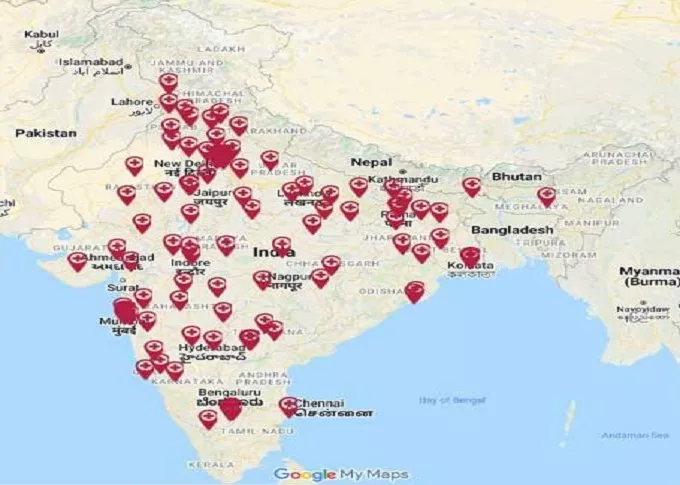What are Irregular Periods (Missed Periods)?
Menstruation is a natural biological process experienced by most women, typically occurring on a regular monthly cycle. However, for some, this cycle is anything but regular. Irregular periods refer to menstrual cycles that deviate from the average 28-day cycle. These irregularities can manifest in varying cycle lengths, unpredictable bleeding patterns, or unusually heavy or light periods. A regular menstrual cycle usually involves a consistent pattern of bleeding, typically lasting between two to seven days. Missed periods can be concerning and disruptive to a woman's life, but understanding the causes, symptoms, diagnosis, and treatment options can help manage this condition effectively.
Who can get Irregular Periods?
Irregular periods can affect women of all ages, from adolescents who have just started menstruating to women approaching menopause. It is more common in teenagers during the first few years after they start menstruating and in women nearing menopause, but it can occur at any reproductive age.
What are the Types of Irregular Periods?
1. Amenorrhea: Absence of menstrual periods.
2. Oligomenorrhea: Infrequent or very light menstrual periods.
3. Polymenorrhea: Frequent, often unpredictable, and excessively heavy menstrual periods.
4. Menorrhagia: Extremely heavy or prolonged menstrual bleeding.
5. Metrorrhagia: Irregular bleeding between menstrual periods.
6. Dysmenorrhea: Severe menstrual cramps and pain.
What are the Causes of Irregular Periods?
Several factors can cause irregular periods:
1. Hormonal Imbalances: Fluctuations in estrogen and progesterone levels can disrupt the menstrual cycle.
2. Stress: Physical or emotional stress can interfere with the menstrual cycle.
3. Weight Fluctuations: Rapid weight loss or gain can affect hormones and cause irregular periods.
4. Thyroid Disorders: Conditions like hypothyroidism or hyperthyroidism can lead to menstrual irregularities.
5. Polycystic Ovary Syndrome (PCOS): PCOS can cause irregular periods due to hormonal imbalances and the formation of cysts on the ovaries.
6. Uterine Fibroids: These noncancerous growths in the uterus can cause heavy or prolonged menstrual bleeding.
7. Pelvic Inflammatory Disease (PID): An infection in the reproductive organs can cause irregular periods and pelvic pain.
8. Perimenopause: The transition to menopause can cause irregular menstrual cycles.
What are the Symptoms of Irregular Periods?
The symptoms of irregular periods may include:
1. Inconsistent Menstrual Cycle Length: Cycles that are shorter or longer than the average 28 days.
2. Unpredictable Bleeding: Irregular and unpredictable bleeding between periods.
3. Heavy or Light Bleeding: Menstrual bleeding that is unusually heavy or light.
4. Severe Menstrual Cramps: Intense pain during menstruation.
5. Missed Periods: Skipping menstrual periods or having infrequent periods.
Does Irregular Periods Affect Fertility?
Irregular periods can sometimes indicate an underlying reproductive health issue that might affect fertility. Conditions such as PCOS, thyroid disorders, or certain hormonal imbalances can impact ovulation and fertility. However, not all irregular periods imply fertility problems. If you are concerned about fertility and irregular periods, consulting a healthcare professional is essential.
How are Irregular Periods Diagnosed?
Diagnosing irregular periods involves a comprehensive evaluation, including:
1. Medical History: A detailed discussion about menstrual history, general health, and any relevant symptoms.
2. Physical Examination: A pelvic exam to check for any abnormalities in the reproductive organs.
3. Blood Tests: To measure hormone levels, such as thyroid hormones, prolactin, and sex hormones.
4. Ultrasound: To examine the ovaries and uterus for any structural abnormalities or cysts.
How are Irregular Periods Treated?
Treatment for irregular periods depends on the underlying cause and may include:
1. Hormonal Birth Control: Oral contraceptives or hormonal intrauterine devices (IUDs) to regulate the menstrual cycle.
2. Lifestyle Changes: Managing stress, maintaining a healthy weight, and regular exercise.
3. Medications: Hormone therapy or other medications to regulate the menstrual cycle.
4. Surgery: In cases of severe conditions like uterine fibroids, surgery may be necessary.
Seeking medical attention from fertility experts for a proper diagnosis and treatment plan is crucial for those experiencing irregular periods. With appropriate care and management, it is possible to achieve a more predictable menstrual cycle and improve overall reproductive health.
Frequently Asked Questions (FAQs)
Can stress cause irregular periods?
Yes, stress can disrupt the menstrual cycle and lead to irregular periods. High levels of stress can affect hormone production and the regularity of the menstrual cycle.
Are irregular periods common during perimenopause?
Yes, irregular periods are common during perimenopause, the transitional phase leading to menopause. Hormonal fluctuations during this time can cause changes in the menstrual cycle.
Can irregular periods be a sign of a serious medical condition?
Yes, irregular periods can sometimes indicate underlying medical conditions such as polycystic ovary syndrome (PCOS), thyroid disorders, or uterine fibroids, which may require medical attention and treatment.
Can irregular periods be a barrier to pregnancy?
Irregular periods can indicate irregular ovulation, which can make it challenging to conceive. However, with appropriate medical care and management, fertility can often be improved.
When should I consult a doctor about my irregular periods?
If you experience persistent irregular periods, extremely heavy or painful periods, or irregularities accompanied by other concerning symptoms, it's advisable to consult a healthcare professional for a thorough evaluation and appropriate management.
Pregnancy Calculator Tools for Confident and Stress-Free Pregnancy Planning
Get quick understanding of your fertility cycle and accordingly make a schedule to track it
Get a free consultation!















